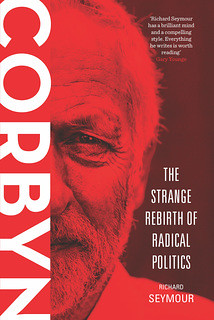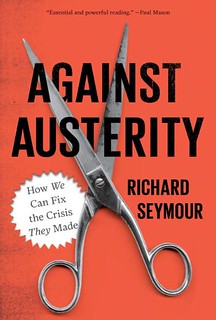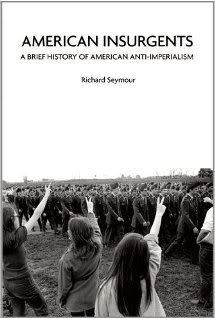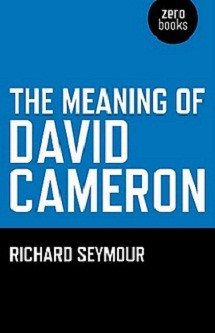Tuesday, February 19, 2008
Segregation, apartheid and the interpenetration of race and class. posted by Richard Seymour

It is a fairly commonplace myth in liberal historiography about South Africa that apartheid was a result of the triumph of illiberal Afrikaaners over the more liberal southern Cape which had the most British influence. It is actually a mytheme in British culture too, expressed in the joke: "Why is Holland so laid back? Because they sent all their mad bastards to South Africa." Another myth is that part of the reason for the ability of the racist-nationalist power bloc to impose entrenched segregation and then apartheid is the lack of pragmatism on the part of resistance groups such as the ICU, the Communist Party and the AAC, but this is to conflate pragmatism with liberalism and social compromise, itself a fairly commonplace gesture in bourgeois ideology. The marxist revisionists of the 1970s and their slightly pomo challengers in the 1980s provided the tools to take these myths apart, but they also furnished new insights into the ways in which 'race' operated as a regulatory principle and how it interacted with class. I am always intrigued by the way the fiction of race blends in with other social forms - class, ethnicity and gender, most obviously. One can easily think of examples: when I grew up a 'Protestant-looking' household was one that could pass for middle class; class itself is itself often understood as a kind of 'ethnicity'; the ideology of 'race' is usually coextensive with a conception of proper gender relations; and, as we will see later, the stratification within classes based on skills and trade has been susceptible to racial ordering. The racially ordered labour system in South Africa is as good a basis as any for investigating these interconnections
The roots of formal apartheid in South Africa, introduced in a series of measures by the Afrikaaner Nationalist government elected in 1948, were established in a sequence of legal, political, economic and ideological mutations that began with the transformation of the Southern African economy by the rise of mining capital. The principle of white supremacy had been established in various ways before – for example, in the Shepstonian policies of colonial Natal which “provided a ready-made rationalisation” for segregation (John Cell points out that the Natalian expert on the ‘Native Question’, Maurice Evans, also held that Natal and Basuto-land provided some of the fabric for possible segregation). And the constitutions of the Orange Free State and the Transvaal Republic insisted on "no equality between coloured people and the white inhabitants". However, an increasingly stark, and rigid, racial order emerged in the late nineteenth and early twentieth century. Through the imposition of racially organised restrictions in the labour system in the late 19th Century and the elaboration of legal doctrines pursuant to the subordination of the ‘Native’ after the Boer War, the ascendant capitalist elite sought to integrate African peasants into the labour supply on an affordable basis. The colour-coding of labour legitimised this subordination and helped to frustrate the development of class consciousness among the growing working class. Crucially, it met some of the demands of white workers on terms that could be accommodated by the ruling class.
However, this is not reducible to a ‘cheap labour’ thesis, which strikes me as a reductionist approach. ‘Race’ was not merely a pragmatic auxiliary to the capitalist management of the labour system, a cheap ‘divide and rule’ mechanism. The doctrine produced and imparted its own rationality, affecting the balance of risks for any would-be employer as well as for statesmen pursuing particular policies. The hyperstition of ‘race’ inflected debates about disease, population management and geography. And the relatively short-term goal of profitable mining was situated within broader debates about what constituted self-government (was it a political or cultural state?) and who was fit for it. It also interacted with religion (capitalist labour could be seen as an admirable system of reward and punishment for fallen man) and rationalism (in which segregated labour was eventually seen as the most efficient use of human resources for the improvement of all).
The historical context for this development is obviously one in which white supremacy was an organising principle throughout the colonial world, and in ex-colonies (for example, the post-bellum American Deep South provided much of the experiential input into the doctrine of segregation in the Republic of South Africa). This racial order infused and, to some extent, enabled the global emergence of nation-states and capitalist development. Initially, mining interests did not favour a rigid racial division of labour. Until 1885, the main mineral traded in Southern Africa was diamonds, and for much of the early trade, Griqua, Kora and Tlhaping producers were dominant. But white diggers had sought to impose their own monopoly on claim ownership with some success. For instance, while the British authorities in the Cape were reluctant to endorse overtly discriminatory legislation, diggers were required to have “a certificate of good character” from a justice of the peace or resident magistrate. The historian Paul Maylam notes that this did not prevent de facto white ownership and control of the diamond mining industry, and it may be that the policy was “racially laden” , particularly if one’s ‘race’ impeded a judgment of “good character”.
Even so, it is clear that whatever significant forms of segregation took place were still usually ad interim rather than premeditated and systematic. Indeed, the initiative often came from white workers who, beholden to a doctrine of "free white labour", sought to maintain and entrench their own relatively privileged status. What the mine-owners did want was to depress labour costs, and they did this by recruiting large numbers of African labourers for “unskilled jobs at minimal rates of pay”. This recruitment drive, especially as demand for labour outstripped supply in the 1890s, stimulated one of the many fears entertained by white workers – being ‘flooded’ or ‘swamped’ by cheap African labour.
The regnant ideology in the English-controlled Cape was assimilationist – the British would use what today is known as ‘soft power’ to win Africans “to civilization and Christianity”, as Sir George Grey put it. This assimilationist posture is often referred to in terms of a "Cape liberal tradition", but I question the utility of this phrase – it seems to re-describe rather than explain. After all, from 1875 there was a great deal of de facto segregation in the "liberal" Cape: for example on the railways, where one’s class of carriage was arranged both by class and race. Further, to de facto segregation was added de jure segregation with the National Reserve Location Act of 1902 which forced Bantu-speaking Africans into restricted locations. Parry makes the important point that the overall context of imperial rule had changed dramatically for Britain. If the British Empire in the first half of the nineteenth century had been expansionist, it had also attenuated its aggression with co-option and persuasion. The Indian Revolt of 1857 and the Jamaican Rebellion of 1865 both stimulated high-handed ‘revenge’ and an increasingly shrill assertion that the "lower races" could not be integrated and so would have to "disappear". Racial ideas meshed with Social Darwinist doctrines in official British propaganda. A new attitude to relations with the Africans was entailed, and it is one in which Victorian liberals were deeply implicated.
However, that background alone would not explain the scale, timing and nature of the transformation, much less the duration of employers’ resistance to entrenched segregation. It was the interaction of this transformation of imperial ideology with economic necessity that made was decisive. For example, the first of a series of cumulative transformations leading to entrenched segregation was arguably the 1894 Glen Grey Act, promulgated by Cecil Rhodes, which abolished communal land ownership, taxed those who could not prove they had worked in the last three months, and imposed male primogeniture laws for the inheritance of land, with the intended effect of driving more and more Africans who had hitherto subsisted on collectively owned land into the workforce. The legislation is named after the turbulent colonial territory that Rhodes was made Prime Minister of in 1890. The British had repeatedly considered similar measures to break up the old African social fabric and win the loyalty of some. It was initially conceived of as an adaptation to indigenous resistance, and this preceded the ‘mineral revolution’, never mind the arrival of Cecil Rhodes. However, the Glen Grey Commission that was put to work in 1892 was aware of the region’s hitherto protection from the pressures of the labour market, and hostile to it. And Rhodes was certainly anxious to satisfy his labour shortages. Whether or not the legislation was primarily intended to supply cheap labour, it did so, and provided a model for others who wanted to do so. At first blush, too, the legislation would not seem to advance segregation so much as integration, even if on a highly unequal basis, since its thrust was to drive African workers into capitalist relations alongside white workers. However, while it stimulated the production of a large African proletariat to work in the mines, it also established separate laws with respect to land and taxation. Segregation was not complete separation – it was separation for the purposes of domination and exploitation. The success of this policy inspired much of the legislation later recommended by the South African Native Affairs Commission (SANAC) and legislation enacted post-Union.
The significance of this legislation is not only the precedent it set. Part of its importance is what it says about the racial order that it was acting on. In South Africa, the arguably mundane business of specialisation of skills and class differentiation had been enchanted by its interaction with ‘race’. Just as certain forms of menial labour was seen as being beneath whites, skill was increasingly a cultural achievement rather than a vocational one, a gift of whiteness rather than of training and labour market fluctuations. Such conceits guided future legislation. In 1898, it was deemed that no ‘coloured’ person could hold an engine-drivers’ certificate of competency. And in 1903, the Volksraad in Transvaal adopted a regulation explicitly barring all but competent whites from underground blasting. When Chinese labourers were imported as a temporary stopgap to the labour supply problem in 1904, they were specifically excluded from over fifty separate skilled trades.
The production of the new racial order was a response to various actual and perceived problems for the rulers of South Africa. In the first place, the British were committed to the principle of white supremacy. The British high commissioner to South Africa, Viscount Milner, had explained to Prime Minister Asquith before the Boer War began that the principle of defending the ‘Native’ from oppression at the hands of both Dutch and English in South Africa was at odds with the principle of winning a loyal ally in the Dutch. Secondly, mining magnates had complained Paul Krueger’s administration and its failure to produce a steady supply of the needed labour especially for the Witwatersrand. The solution could not involve coercion of a too obvious kind, since the ‘Native Laws’ of the Boers that resembled slavery had been an issue utilised by the British government in its war propaganda. Yet, if the transformation that took place during and after the Boer War was animated in large part by the desire of central mining interests for cheap labour, the enabling discourses were legal, political, scientific, bureaucratic and cultural as well as economic. It required a vast effort at social engineering, the adoption of a bureaucratic rationality and a form of knowledge about the ‘Native’ that was neither as variegated nor ambiguous as that possessed by missionaries. As Adam Ashforth points out, the ‘Native’ had to be carefully constructed to be the subject of laws. SANAC, appointed by Viscount Milner following the Inter-Colonial Customs Conference of 1903 at which delegates from Britain’s regional colonies were in attendance, was to produce this kind of knowledge. The proper subject of ‘Native’ law was thus defined variously as ‘Kafir’, ‘Bantu’, ‘Native’ or ‘savage’, and this definition itself overlaid with assumptions of cultural inferiority and disability. In particular, he was understood to be bound by feudal political forms and antiquated modes of production that were unproductive. It was therefore necessary to impose restrictions on ‘Native’ land ownership, and undermine their existing social forms with the imposition of primogeniture. If only it were possible to “do away with free land,” one could “strike at the root of much that is most unsatisfactory in Native life”. Further, intermixture between the races should be avoided, and the ruling race’s supremacy should be carefully conserved. Capitalist social-property relations and white supremacy were cosubstantial with civilization.
Other discourses co-produced the new segregated order. The bubonic plague had arrived in South Africa in 1900, with the Boer War in procession. A surfeit of metaphors through which the ‘Native’ was understood as ‘disease-ridden’ came into widespread useage. The description was often used as if it were cognate with ‘lazy’, ‘uncivilized’ and ‘poor’. These metaphors contained a hidden cargo of economic resentment, but they also induced a set of policies designed to reduce the intermixture of African and white populations. In the case of Cape Town, the policy of moving Africans to Uitvlugt was considered a great success. It produced a temporary labour shortage, but this could be managed if the location was used as a source for labour to be funnelled to employers based on ‘pass laws’. Not only was the ‘Native’ considered diseased. He was also the source of viral discontent, especially where there was too great an effort to civilize him and where he had developed expectations beyond his means. He stirred up discontent and was unwilling to perform the manual labour that was required of him.
The SANAC recommendations provided the basis for future segregationist legislation. But as Legassick points out, a large part of the responsibility for disseminating these ideas is borne by those liberals who pressed for self-government for South Africa along the lines of Australia and Canada. Lionel Curtis, an advocate of integrating South Africa into a single Commonwealth state on the basis of self-government, was also one of the earliest explicit advocates of segregation. Other liberals, such as James Bryce, considered the ‘disaster’ of Reconstruction states in the American South an exemplary lesson in the danger of extending self-government to the ‘natives’. While the South Africa Act of 1909 granted self-government for whites, ‘Natives’ were the subject of authoritarian colonial relations. The Natives’ Land Act of 1913 restricted African land rights dramatically. Subsequently, some of the most violent labour disputes in the immediate aftermath of WWI - the South African government actually bombed the workers involved - involved the white working class wanting to avoid the status of 'Kafir'.
I leave the chronology there, although the resistance through the 1920s and 1930s, and what it says about combined an uneven development, is a compelling topic in itself. But let me put together some conclusions. It is obviously not possible to read off the transformation in South Africa’s racial order from economic developments. However, it is possible to say that among other things, the racial order was a particular ordering of labour, a colour-coding of labour’s status. It was increasingly seen as a natural means of managing both labour relations and the labour supply. The reshaping of the racial order did meet economic interests that were clearly expressed through policymaking institutions, and these emerged specifically from the transformation of the South African economy by the discovery of diamonds and gold in particular. It acted to consolidate Britain’s imperial tutelage of and economic position in the mineral-rich territory, by uniting its interests with those of whites in South Africa. Although South Africa’s capitalist class was not always the only or main agent pressing for entrenched segregation, only when that agency shifted from general resistance to aggressive support for such policies did the demand for them become effective. The spread of capitalist social-property relations and the imposition of white supremacy were co-extensive in a way that was possible chiefly because of the way in which capitalist relations were borne by the agency of empire. This is both because of the racist doctrines through which the British Empire came to understand its subjects, but also because it involved a capitalist society in an encounter with pre-capitalist societies which seemed self-evidently ‘backward’.
Labels: apartheid, capitalism, class and race, segregation, south africa










